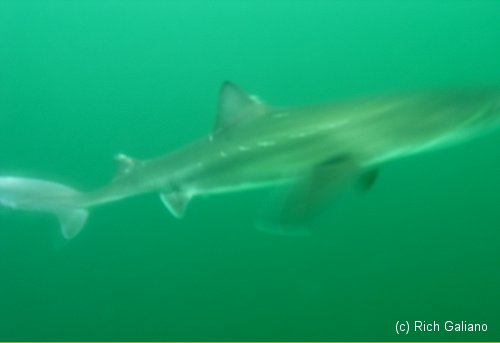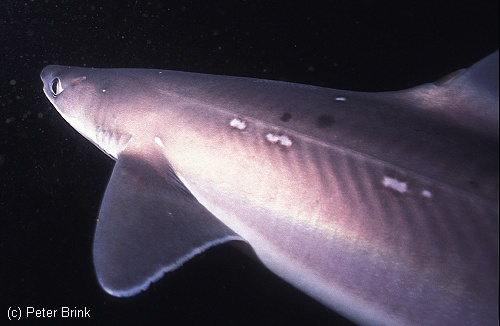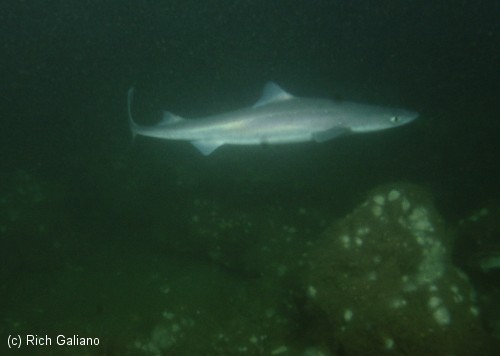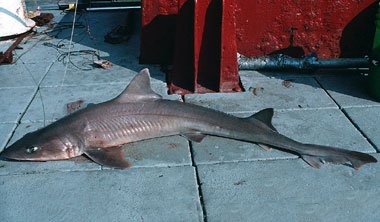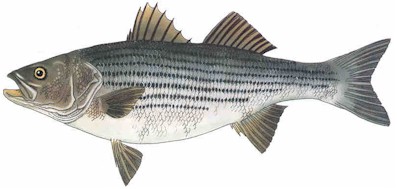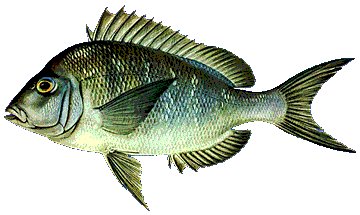Spiny Dogfish

Spiny Dogfish
Squalus acanthias
Size:
to 3ft (male)
to 4 ft (female)
Habitat:
cool coastal waters, midwater, and bottom, but seldom at the surface
Notes:
The Spiny Dogfish has two distinguishing features: rows of small white dots that run along its sides, and a sharp spine that is found in front of each of its two dorsal fins. The spines of the Spiny Dogfish are formed from material much like that of our teeth. Other distinguishing features include the lack of an anal fin, and the rounded, un-notched tail, unlike the Smooth Dogfish. In the water, the white spots are the thing most likely to jump out at you for identification, although they fade away in some older individuals.
This is thought to be the world's most abundant shark, occurring worldwide in temperate and sub-arctic ocean waters. They prefer cooler water temperatures, from a low of around 45-46 F to a high of 54-59 F, and occur in oceans and coastal zones but rarely enter the upper reaches of estuaries and never occur in freshwater. Spiny Dogfish are gregarious in nature, often occurring in 'packs' of hundreds or even thousands of individuals, and may be found anywhere in the water column, from the bottom to the surface.
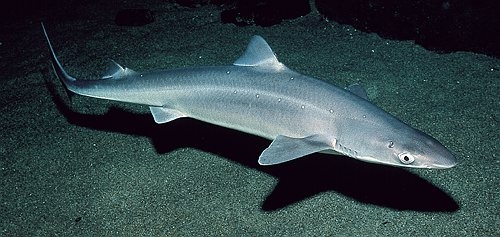
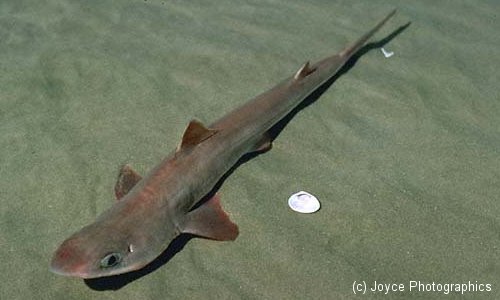
Spiny Dogfish are voracious predators that feed primarily on bony fishes. Principal food are members of the herring family, sand lances, smelts, and euphasids ( a krill-like ocean shrimp. ) Twenty-seven other fish species, many being of commercial importance fall prey to the Spiny Dogfish, as do over 13 species of invertebrates including squid, lobster, and crabs. "Spurdogs" are not picky, and will feed on almost anything that is plentiful, even Comb Jellies. In Europe, they are often served as "Fish & Chips", but in North America, they are generally considered nuisance/trash fish, although sometimes marketed commercially as "Cape Shark". They are preyed upon by larger sharks and are not above eating each other.
This long-lived species is the most studied of all the sharks, no doubt due in part to their use as a dissection subject in the classroom. Some researchers have estimated the life expectancy of this shark to be from 25 to as much as 100 years. Females of the species mature in about 10 years at a length of 27-40" and males mature in 11 years at a size of 24-28". Females are ovoviviparous ( produce eggs that hatch within the body ) and have a gestation period of 22-24 months, the longest of any vertebrate. They generally have from 2-15 pups with an average of about 6-7 with each being 9-12" in length. With such a long lifespan and low reproductive rate, this shark is particularly vulnerable to overfishing.
Spiny Dogfish seem to be attracted to yellow - any yellow object, such as a bag or tank, will provoke their curiosity. Lone individuals are shy, but these little sharks become bolder in groups, and a pack may take turns making passes at you, which soon goes from amusing to annoying. If one comes closer than you would like, a swat on the nose is usually enough discouragement. The teeth are sharp but too small to do much damage, and the Spiny Dogfish is more likely to just bump you than actually bite. Of more concern are the two mildly poisonous spines on the back, with which the shark will lash out to defend itself if necessary. They are graceful sinuous swimmers - fast and agile.
